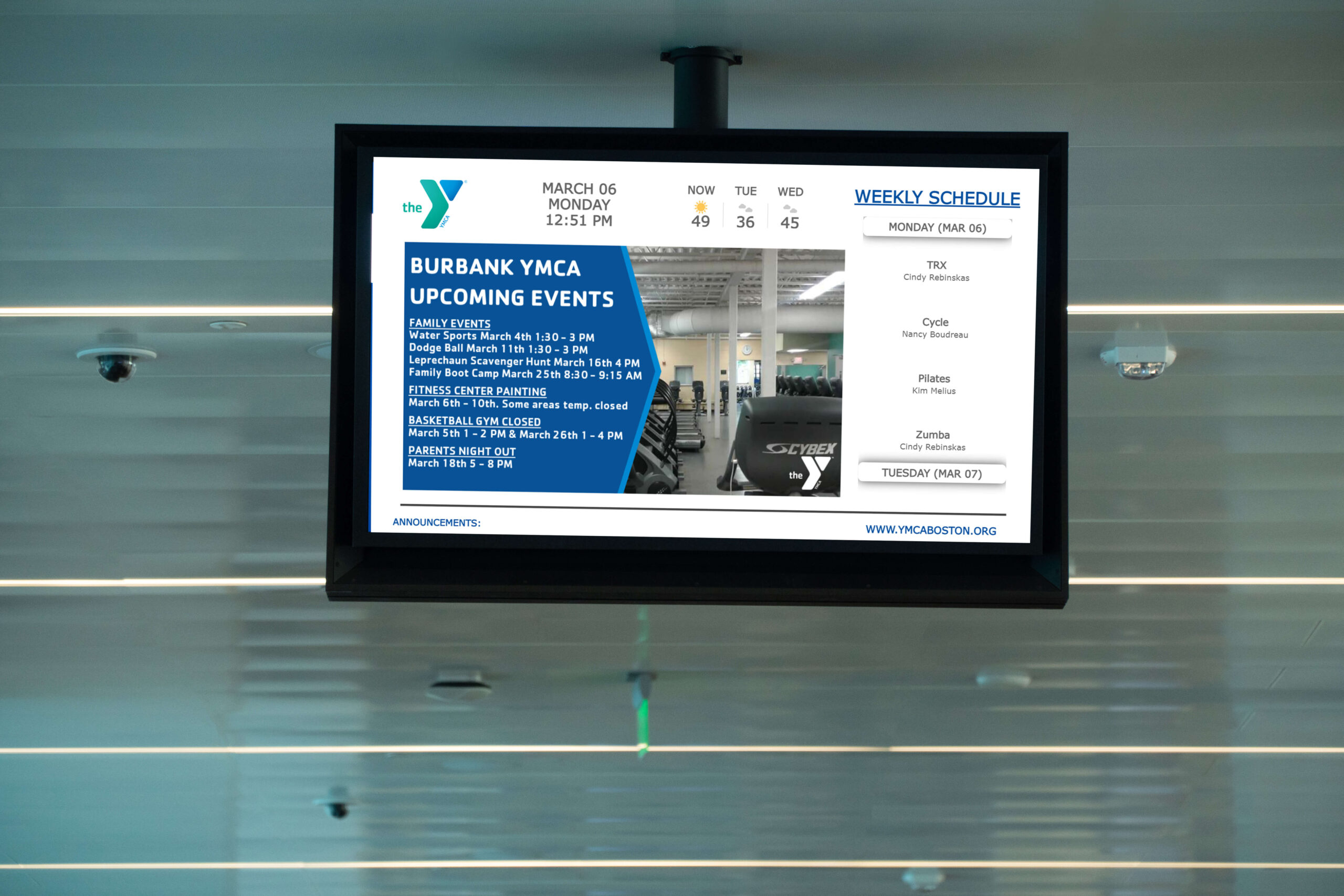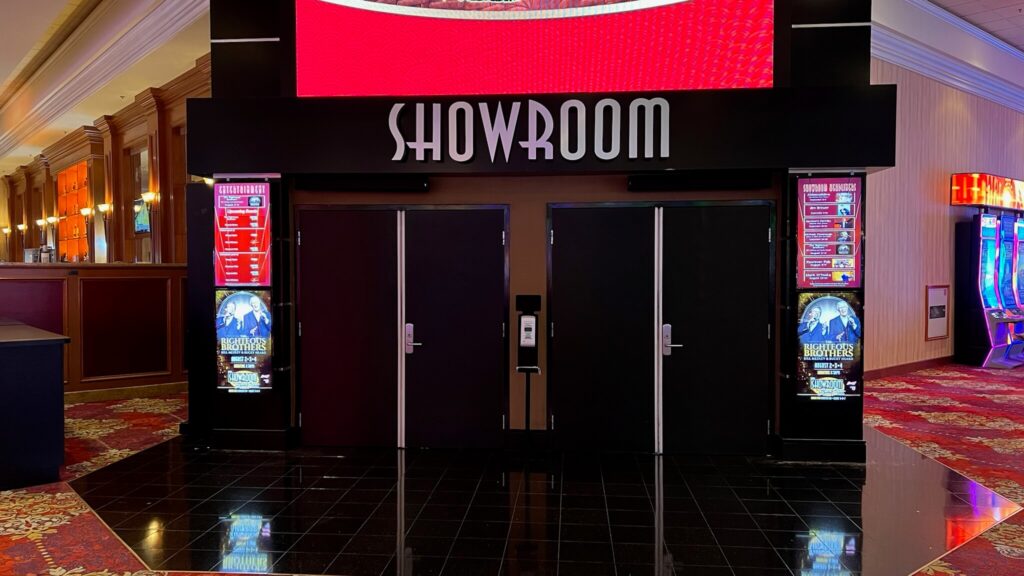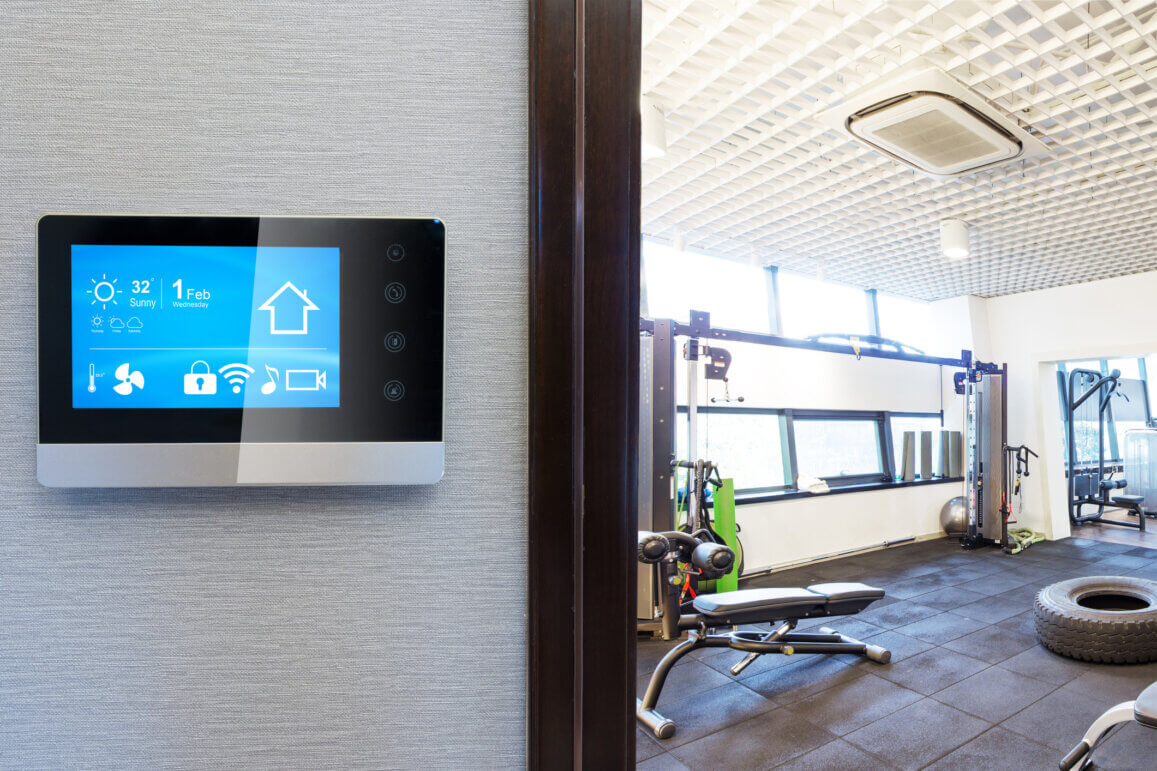2023 SIGNAGE OVERVIEW
Another year has flown by, which shouldn’t be so surprising when you work in an industry that evolves as rapidly as digital signage. In fact, current trends show that the digital signage market will grow from $16 billion to $27 billion over the course of 5 years. That is a substantially fast compound annual growth rate of 10.9%. With so much constantly changing, certain innovations and trends can pass you by! That’s why the experts at REACH are here to analyze and evaluate digital signage trends and forecasts. Before looking forward to the future, we will recap the past year of signage so we have a better understanding of where we currently stand. This should give you a holistic view of the current signage climate, which in turn, can inform future signage purchases! If you would like to start your digital signage journey, you can begin by talking to an expert here.
TRENDS THAT ROSE IN 2023
2023 was another year of great innovations for the digital signage industry. As signage software evolves, users will be able to implement more creative and effective marketing strategies that bolster communication efforts. Whether sending out internal notices or updating external promotions, digital signage saw a lot of new ways to reach your audience this year. These are just a few of the biggest trends we saw takeover in 2023.
CLOUD-BASED SIGNAGE
You may be surprised to learn that even in 2023, there is still digital signage that is solely reliant on hardware. However, more so than ever, cloud-based solutions such as REACH are on the rise. Hardware-based signage is open to a host of issues, such as hardware failures, disconnects, crashes, and software incompatibilities. While all hardware eventually ages out, cloud technologies are constantly evolving in the digital realm. So long as you are using a device that can connect to the internet, you can access your signage content. Additionally, this also means all your content and assets are backed up to an online storage system, meaning hardware crashes will not result in a loss of assets. This flexibility is a big reason why cloud-based solutions are growing more popular. Being able to update displays in real-time from any location or device is a huge improvement to workflow. Not only that, it ensures your audience always receives accurate messaging, and allows easy asset sharing between facilities. The flexibility of the cloud affects each step of your signage journey, from creating assets to publishing content. With this in mind, it is important to remain aware of cloud-technologies and how these solutions will continue to improve in 2024.
DIGITAL DISPLAYS
Though digital signage is becoming less reliant on hardware, it’s still a crucial aspect of the digital signage ecosystem. For instance, OLEDs and QLEDs saw significant growth over the year in this sector due to their increased image quality and color expressions. Not only that, but signs as a whole became progressively more sustainable this year as well. Digital displays already reduce waste compared to traditional bulletin boards, as their digital nature eliminates the need for printing costs which reduces the amount of paper, ink, and other materials winding up in the trash. In addition, companies are using digital signage to promote sustainability initiatives within their organization. Doing so can foster growth in other areas of the corporation, such as social and economic goals. Hence, going green in 2023 meant more green in the pocket of your business as well! As social calls for environmental sustainability continue to increase, businesses can expect to further adapt their environmental objectives as well. Digital signage will continue to be a key innovator for sustainability.
RETAIL SECTOR GROWTH
The retail sector of the signage industry continues to see rapid growth in adopting signage technologies. Many retailers cite “creating an engaging in-store customer experience” as an important factor for success. Digital signage is a natural tool to help create such an experience. These displays are strategically placed around retail locations as touchpoints for customers to engage with that increases the chances for a conversion. Integrating digital ads into retail stores allows these locations to promote targeted ads for items within the store that have gone on sale, part of limited-time deals, and more. It’s also a great way to manage and get rid of inventory! The dynamic elements of signage also draw in greater audiences and result in more purchases. In fact, a recent 2021 study found that 76% of American consumers are enticed to enter previously unvisited stores due to effective signage, and 68% have made purchasing decisions based on attention-grabbing signage.
INTERACTIVITY
Interactivity is still a relatively small but rapidly growing segment of digital signage. Interactive digital signage kiosks find plenty of use in restaurant and retail chains. These industries are able to use QR codes to push promotional deals and one-time deals to customers at a moment’s notice. Orders can be taken through these kiosks as well, reducing wait times and confusion among patrons. Giving customers control of their own experience can translate to more purchases as well. Of course, digital displays aren’t the only place you should be promoting your signage. The popularity of mobile devices and applications have forced companies to begin linking digital signage to mobile apps via QR codes. Connecting multiple channels creates an omnichannel marketing experience that strengthens your brand. This opens the door to other interactive solutions, such as wayfinding, product information, and customer service. These installations can also collect customer data such as email addresses, feedback, and survey responses. With so much feedback, companies can improve marketing and customer engagement.
CHALLENGES FACED THIS YEAR
As with any tech-related industry, the biggest challenges digital signage faced this year were security related. Moving forward, it is critical for companies looking to install digital signage to ensure that robust security functions are in place. This is equally important for software and hardware alike. Ensuring your platform is secure will prevent future frustrations surrounding data breaches, sensitive information leaks, and inappropriate content. This protects both people within your organization as well as potential clients. With the rise of more advanced AI functionality, the importance of cybersecurity must not be ignored.
CASE STUDY RECAPS
YMCA OF GREATER BOSTON
The YMCA of Greater Boston wanted to upgrade its old communication software to something more modern. However, this would result in an inefficient use of resources and inaccurate messaging. They needed a solution that was easy-to-use, customizable, and could be updated from a central location. After implementing REACH, the YMCA has seen a significant boost in their quality content creation that has seen more engagement from visitors. Patrons are now aware of class registrations, camp deadlines, and important events. They’ve even expanded to touchscreen signage, helping users navigate its facilities and schedule workouts.

AURORA PUBLIC SCHOOLS
The Aurora Public School District has done an excellent job incorporating digital signage into nearly every aspect of its strategy. Initially looking to integrate digital signage for basic maintenance tasks, Aurora Public Schools now use digital signage for live streaming events, cafeteria menus, and weather & traffic updates for bus routes all help the school run smoothly. Students also are more engaged as integrated calendar solutions make them more aware of clubs and school events. This results in more registration and greater attendance. This level of commitment is an excellent example of the flexibility signage solutions offer.

SOUTH POINT CASINO & SPA
South Point Casino & Spa is a great example of how collaborative spaces can make effective use of digital signage. As a bustling resort, South Point wanted a communication system that would help them host live shows and promote events more effectively. With REACH’s help, they were able to build out a unique solution with third-party integrations that allowed them to pull their complex scheduling and sharing data to REACH’s software. Now, they have an automated calendar sharing integration that streamlines the pre-production process.

LOOKING AHEAD TO 2024
Heading into 2024, the growth surrounding this industry will only accelerate. Regardless of the industry you find yourself in, there’s certain factors everyone must be aware of for the new year.
AI-DRIVEN CONTENT
Believe it or not, AI technologies can already analyze data in real-time in order to create content. When paired with digital signage, the results can be extremely effective. For instance, AI-driven digital displays can change its material by analyzing a viewer’s physical features to determine things such as age, gender, and other demographics. This information can then be used to deliver targeted ads to each potential customer with hypersensitivity.
AUGMENTED REALITY
Augmented reality is a rapidly growing sector of the interactive technology sector. In fact, it’s projected to generate $53.71 billion by 2027. AR will allow audiences to actually engage with your displays outside of simple QR codes. Imagine pointing your phone at a screen and seeing an entirely new image, video, or other graphic come right out of the screen! AR will bring marketing materials to life and play a huge part in business growth in the coming years.
ECO-FRIENDLY TECH
We’ve already hinted at how sustainability will continue to be a focus for digital signage in 2024. Reducing printing costs and wastes is only a minor way to go green with signage. Newer screen models and OLED displays are being designed with more energy efficient materials. These models will consume less power and generate less heat, reducing their environmental impact. Once these initiatives are aligned with other company objectives, you can see growth in multiple sectors over a greater period of time.
REMOTE MANAGEMENT
Cloud technology will continue to improve in 2024, prompting more and more software providers to implement cloud-based signage. Some solutions may not even require hardware, as seen with REACH’s recent push for web-based digital signage.
HOW TO PREPARE
That was a lot of information to cover in such a short time, so you may find yourself slightly overwhelmed with it all. Not to worry. To ensure all our clients are prepped for the new year, here are some simple bullets to remember that will help you keep up to date with all digital signage trends!
- Stay updated on the latest digital signage content, tech, and trends by following the REACH Resource Page
- Don’t just jump on the bandwagon. Do your research and know what tech aligns with your goals.
- Try out new display technologies before going all in. Learn from the results to figure out what works best for you.
- Networking is key. Join digital signage industry forums, attend webinars, and don’t shy away from asking experts for advice.
ABOUT REACH
REACH acts as both a hardware and software provider for digital signage. When you partner with REACH, you join a network of industry professionals committed to your success. A strong belief in evolving technologies runs throughout the company, resulting in robust digital solutions. To begin your digital signage journey, click the button below to request a free demo from REACH today!



